Békéscsaba is a town known for its rich history, beautiful architecture and vibrant cultural scene. Kossuth Square is the main square of the city. Here you will find the impressive neoclassical Town Hall. Walking around the square you will come across local, charming shops, cafes and restaurants.
Széchenyi Square is another centre of city life. Here you will find the beautiful St. Anne’s Church, impressive in its architecture and inside you can admire the intricate stained glass windows and decorative details.
Also visit Csaba Park, a green oasis in the heart of the city. Strolling along its paths or just taking a moment to relax is a delight here. During the summer months there are music concerts and traditional Hungarian folklore performances. The Békéscsaba County Museum presents fascinating exhibitions on the history, archaeology and art of the region. From ancient artifacts to modern paintings, the museum provides a comprehensive overview of Békéscsaba’s cultural heritage.

Location
Békéscsaba is a city in Hungary, located in the southeastern part of the Great Hungarian Plain.
Árpád Spa and swimming pool
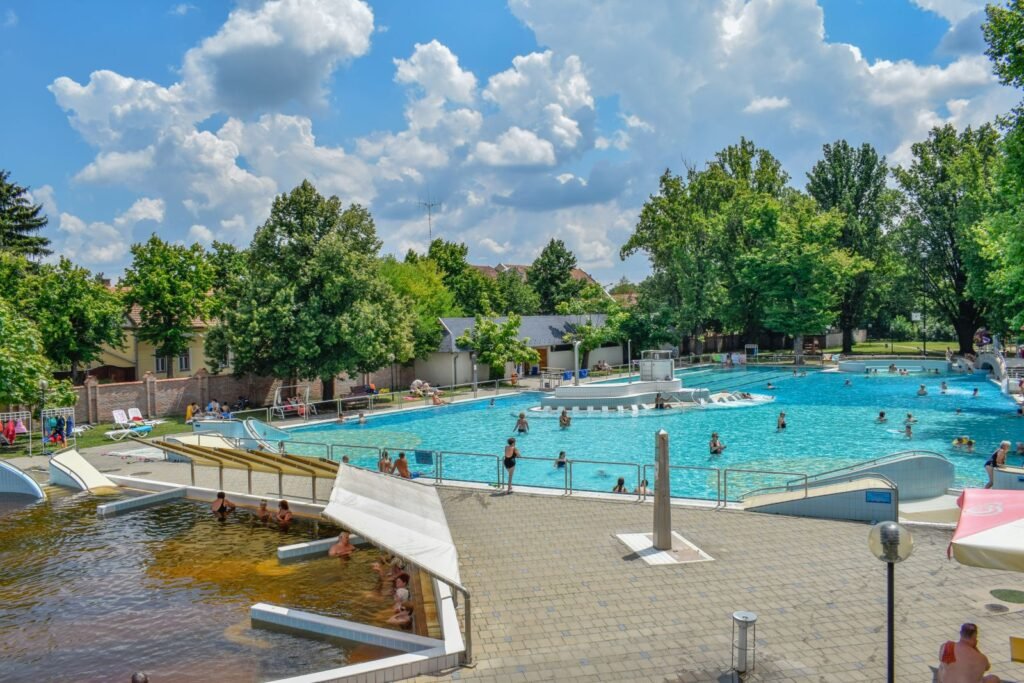
Rich in alkaline hydrocarbonates, the thermal waters of 36-38°C feeding the medicinal pools are especially effective in the treatment of rheumatic and locomotive disorders.
Partially covered in the winter, the open-air medicinal pools and the swimming pool with a grandstand are available all the year round, and so are the sauna and the steam bath. Further attractions include a giant slide and a pool for novice swimmers. Covering an area of1,200 m², a theme bath and spas offer a wide variety of facilities including jacuzzis, a whirlpool, designated sunbathing areas and effervescent baths.
Munkácsy Mihály Museum
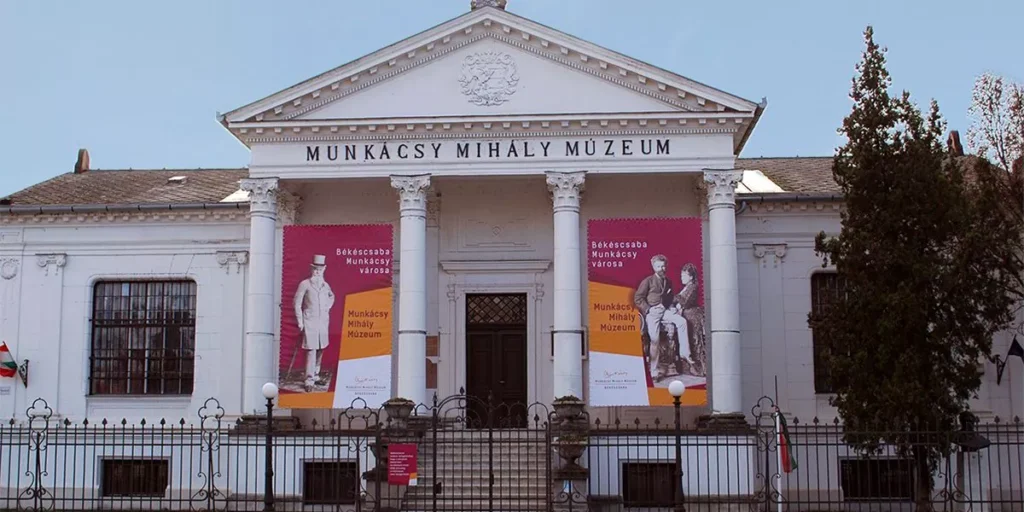

Mihály Munkácsy was a Hungarian painter and fresco artist. Orphaned at the age of 8, Mihály Munkácsy went to Békéscsaba in 1852 to live with his maternal uncle, István Reök. Of his siblings, only Gizella went to Békéscsaba, raised by Sarolta Reök and Jakab Steiner.
The Steiners sold the residence to the Omaszta family in 1850, a dynasty that lived in the house for almost a hundred years. Their furniture and objects were preserved by the Lutheran church: the interiors of the rooms compiled from them provide information about the lower, bourgeois world of Békéscsaba at the turn of the century.
Munkácsy Emlékház

The Munkácsy Memorial House was built in 1994 on the occasion of the 150th birthday of Mihályi Munkácsy. The classic building of the Memorial House was built in the 1840s.
The renovation of the Munkácsy Memorial House began in early 2020, and the renovated memorial house reopened its doors in September 2022. Thanks to the investment, it has not only become more beautiful, but also expanded with interactive elements. Each room in the renovated building has a unique theme. The Lutheran church has preserved the furniture of the Omaszta family, so the rooms faithfully reflect the noble, bourgeois world of Békéscsaba at the turn of the century.
Körös-Maros National Park
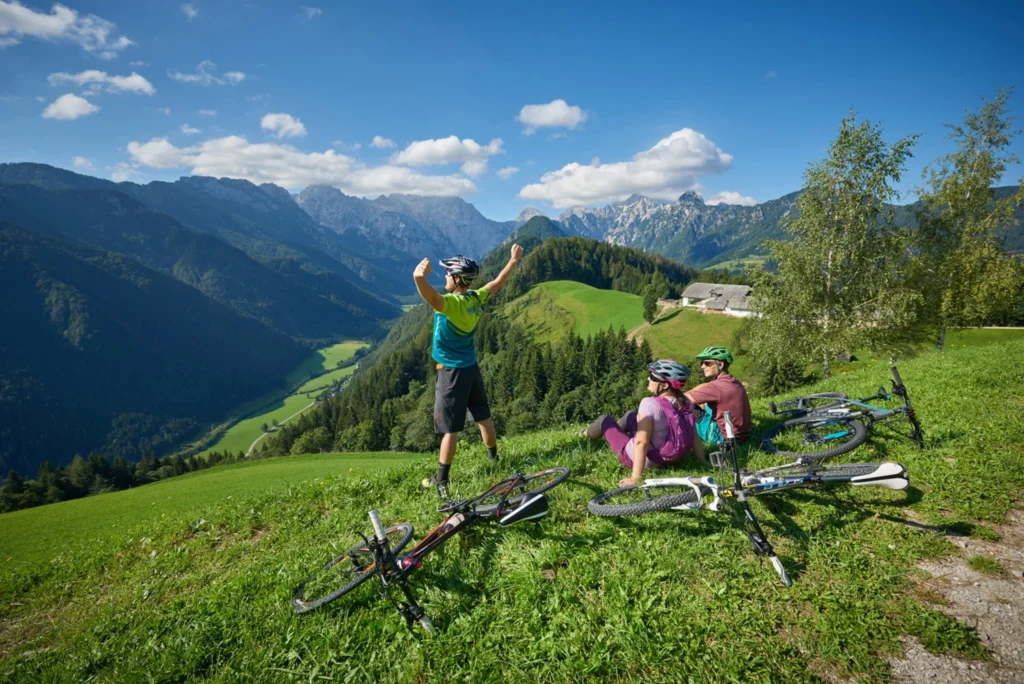
The operational area of the National Park is 800,000 hectares. Its jurisdiction includes the territory of Békés County, the area of Csongrád County located to the East from the Tisza River, the Dévaványa-Ecseg steppes, as well as fractions of the Körös flood-plains in Jász-Nagykun-Szolnok County.
This national park is celebrated for its unique ecosystems, including wetlands, forests, and meadows, which are home to a variety of flora and fauna. As you explore the park, be prepared to encounter diverse bird species, such as the majestic white-tailed eagle and the colorful bee-eater, making it a paradise for birdwatchers. The tranquil rivers and lakes provide a serene backdrop for various recreational activities, including kayaking, fishing, and hiking.
Széchenyi-Wenckheim kastélyrom
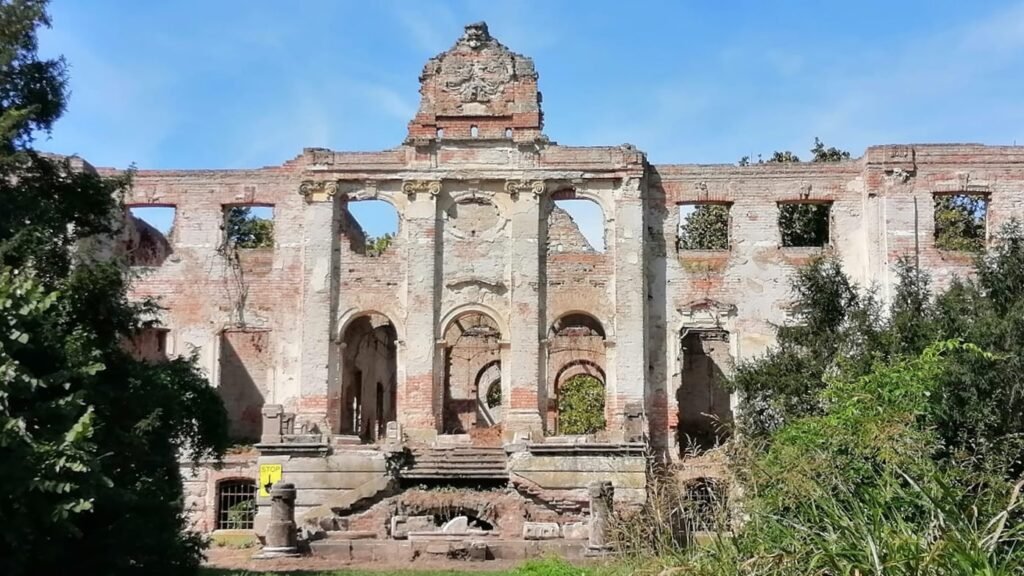
Wenckheim-Almásy Castle
The castle was built by János György Harruckern and then rebuilt by the Wenckheim family in 1801 after a major fire. The last owners of the castle were the Almásy family, hence its name. The “well-known” building was the site of many historical events, including the “guest” of János Damjanich, one of the leaders of the Hungarian War of Independence and one of the 13 martyrs of Arad, in 1849.
Széchenyi Liget
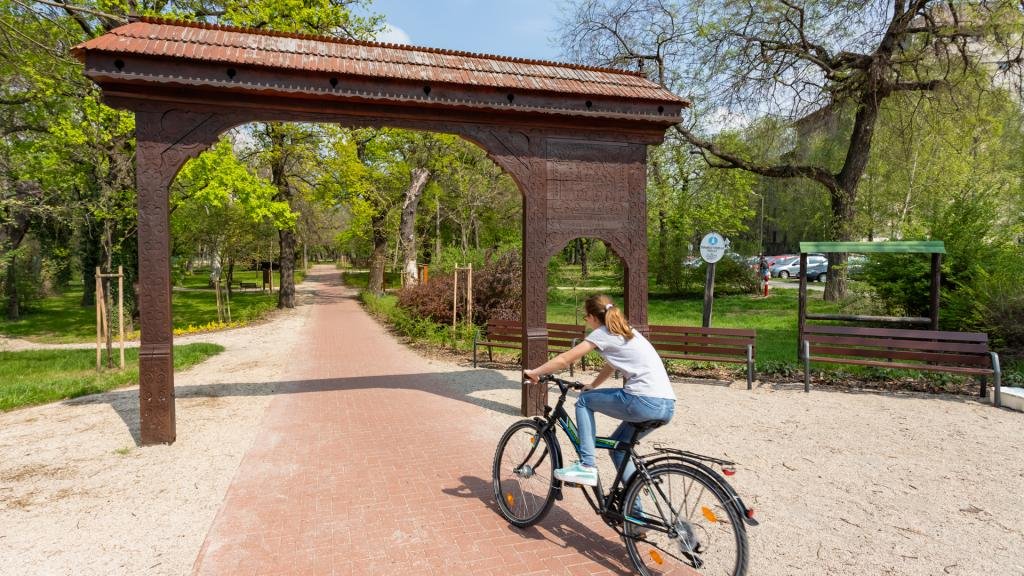
The grove, surrounded by the Kurca River, is one of the most beautiful public spaces in Szentes. Among the planted trees, you can admire, for example, the eastern plane tree, the cigar tree, the white and red linden, the white birch, the imperial tree, the Japanese acacia, the white horse chestnut, the boxwood, the narrow-leaved silver tree or olive willow, and among the shrubs, the dwarf almond, the sorrel barberry, the wild cigar tree, the white boxwood, and the ornamental pearl cane. Its main entrance is marked by the ornately carved Székely gate, which was given as a gift from Békéscsaba’s twin city – Székelyudvarhely.
Jókai Theater Békéscsaba
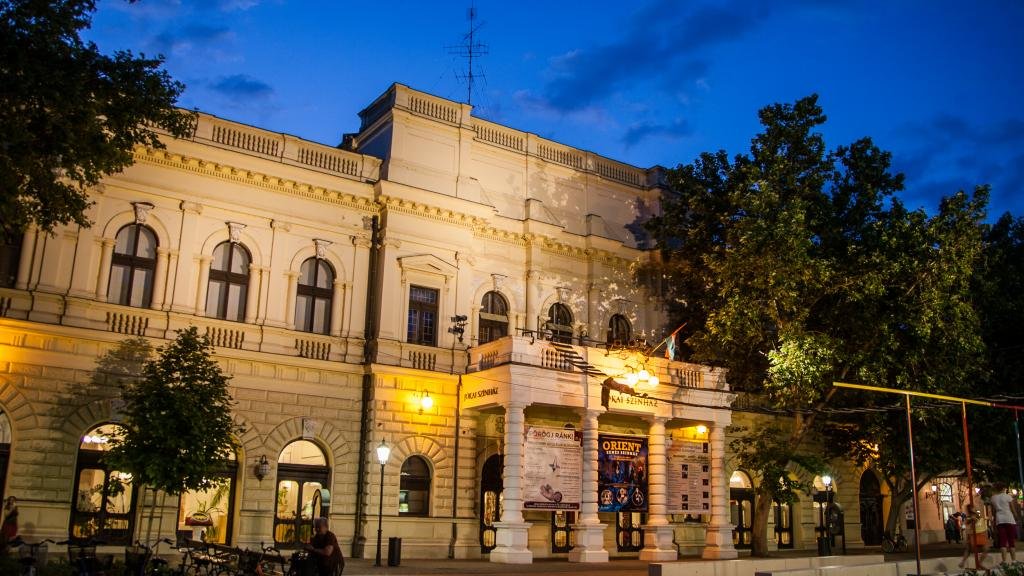
Békéscsaba has been hosting theatrical performances since 1840, and initially itinerant companies performed here as well, in suitable halls in the village. The current permanent theater building – which was then called “Vigarda” or Vigadó – was built with public donations by the people of Csaba, based on the plans of architect Andor Halmay under the direction of city engineer Ernő Sztraka. The theater hall at that time had a total capacity of 600 seats (including standing rooms). The theater building was inaugurated in 1879.
Csabagyöngye Kulturális Központ
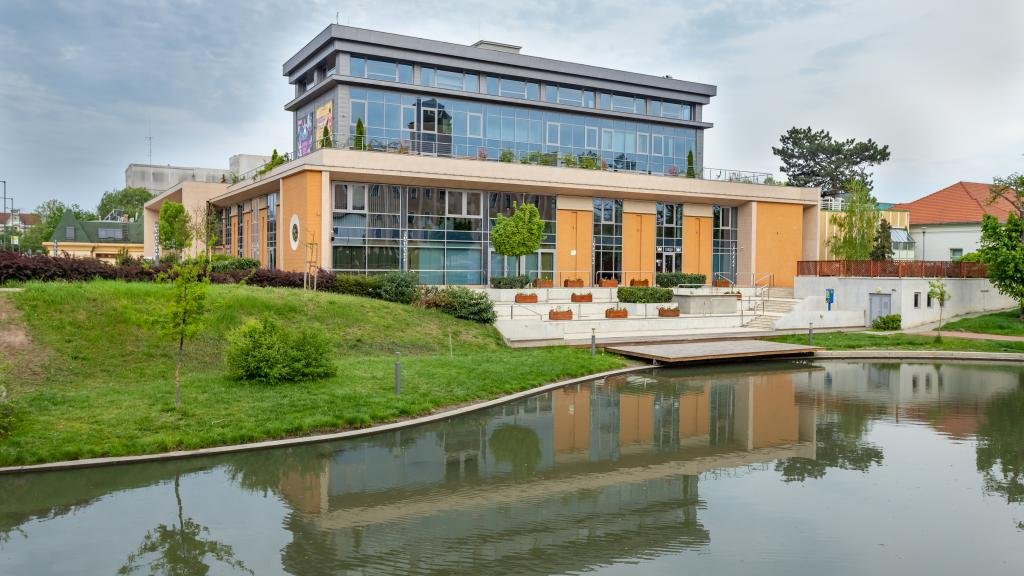
The Csabagyöngye Cultural Center is located in the city center, close to the main square. The cultural center is one of the most important institutions performing complex public education and cultural tasks in the county capital and the southern region of the Great Plain.
The institution is completely barrier-free, its usable area exceeds six thousand square meters. The building also houses several common rooms, a multifunctional hall and exhibition space, as well as a café and a restaurant, and the terrace along the Élővíz Canal provides a unique setting for our events in the city.
Kossuth tér (Kossuth Lajos Square)
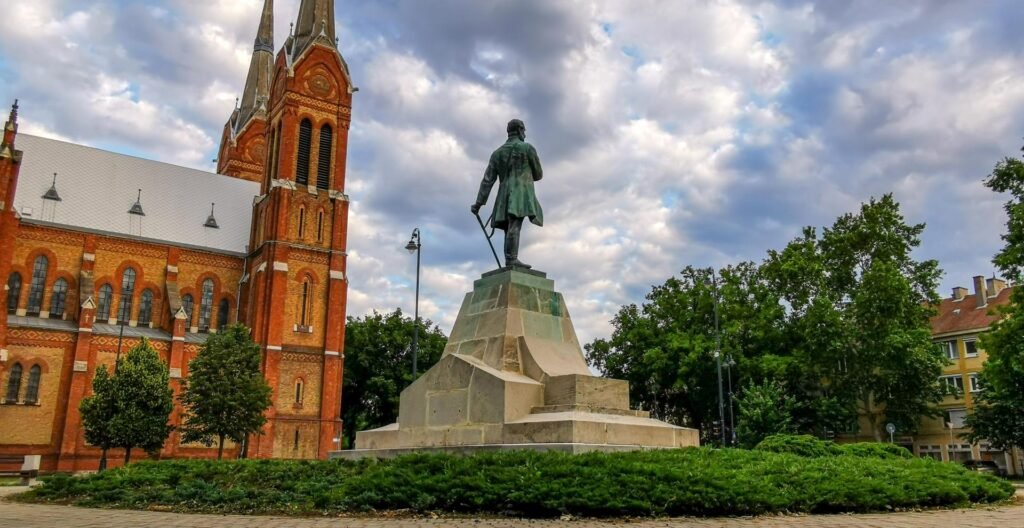
Kossuth Square, the oldest square in Békéscsaba, is the oldest resting place in the city. The square is located in the heart of Békéscsaba, in the historically developed religious, administrative and transport centre of the city, for centuries. Since 1905, the monument has stood on a 4-metre pedestal in the square, and the square was renamed to its current name due to the growing cult of Kossuth at the time.
The headquarters of the First Great Plain Economic Railway was also built here, making the square the centre of the largest light rail network in the country, a reminder of which is the preserved building and the commemorative plaque placed on it.
